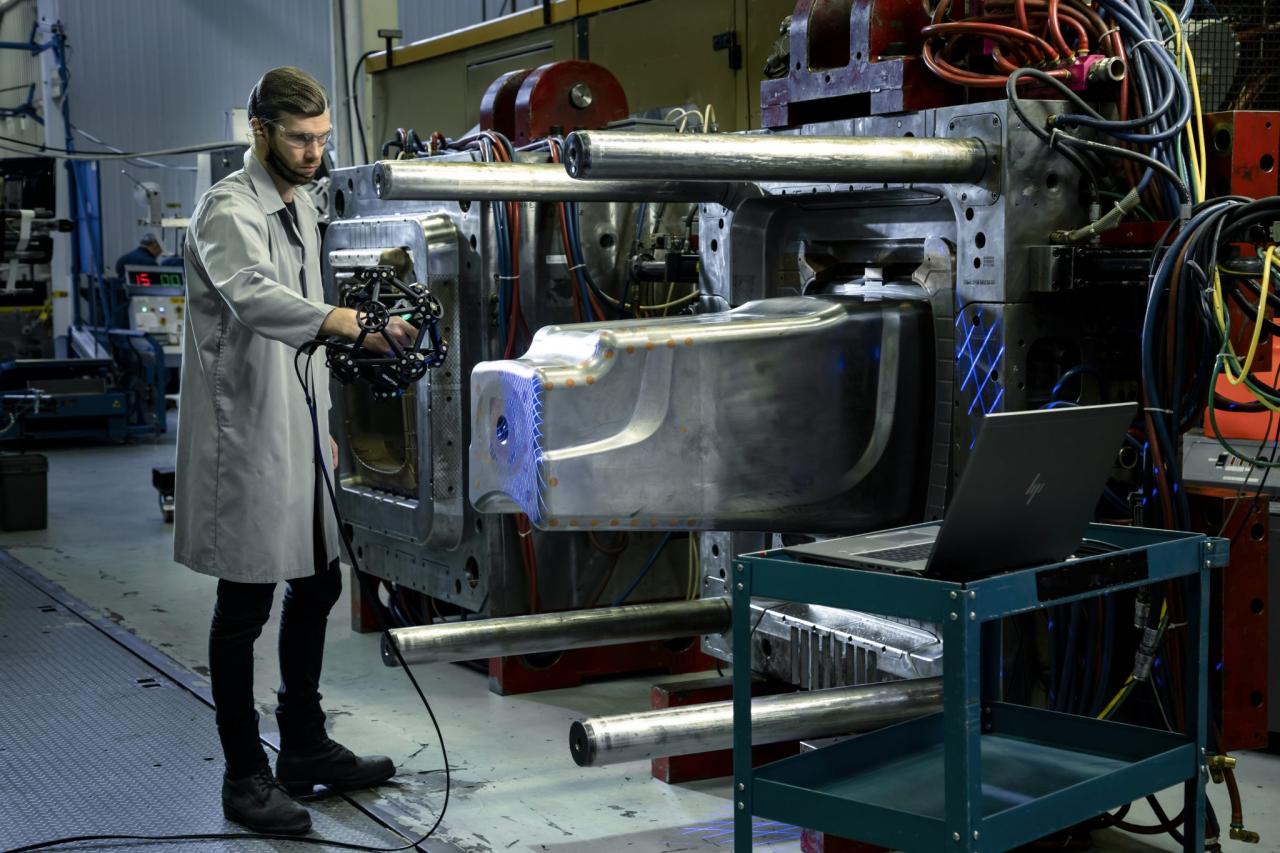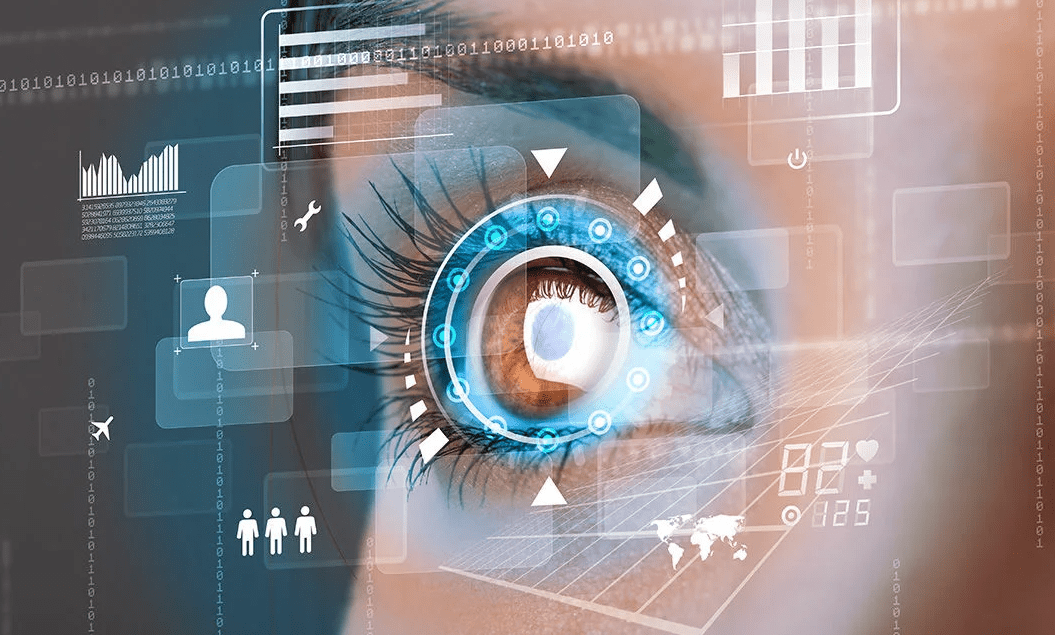Scanning Technologies: A Journey Through Innovation
Scanning technologies set the stage for this enthralling narrative, offering readers a glimpse into a world where innovation meets precision. From the humble beginnings of early scanners to the sophisticated […]

Scanning technologies set the stage for this enthralling narrative, offering readers a glimpse into a world where innovation meets precision. From the humble beginnings of early scanners to the sophisticated imaging systems of today, this exploration delves into the fascinating history, diverse applications, and exciting future of scanning technologies.
Scanning technologies have revolutionized countless industries, enabling us to see the unseen, analyze the complex, and unlock new possibilities. From medical imaging that allows doctors to diagnose diseases with greater accuracy to industrial inspection that ensures product quality and safety, scanning technologies have become indispensable tools for progress.
Scanning Technologies

Scanning technologies have revolutionized various industries by enabling the conversion of physical objects and documents into digital formats. From medical imaging to document digitization, scanning technologies play a crucial role in data capture, analysis, and information sharing.
Fundamental Principles of Scanning Technologies
Scanning technologies employ a variety of principles to capture and digitize information. The core principle involves converting an image or object into a digital representation by measuring the reflected light or emitted radiation.
- Optical Scanning: This method uses a light source to illuminate the object, and a sensor detects the reflected light. The sensor converts the light intensity into electrical signals, which are then processed to create a digital image. Examples include flatbed scanners, document scanners, and barcode readers.
- Acoustic Scanning: This technique utilizes sound waves to create images of objects. Ultrasound scanners, for instance, emit high-frequency sound waves into the body, and the reflected waves are used to generate images of internal organs.
- X-ray Scanning: X-ray scanning employs electromagnetic radiation to penetrate objects and create images. This technology is widely used in medical imaging, security screening, and industrial inspection.
- Magnetic Resonance Imaging (MRI): MRI uses magnetic fields and radio waves to generate detailed images of the body’s internal structures.
- Computed Tomography (CT): CT scanning uses X-rays to create cross-sectional images of the body, providing detailed anatomical information.
Historical Evolution of Scanning Technologies
Scanning technologies have undergone significant advancements over the years, driven by technological innovations and evolving needs.
- Early Scanning Technologies: The first scanning devices, such as the mechanical drum scanner, emerged in the early 20th century. These devices used mechanical systems to move the object or the scanning head, resulting in slow and cumbersome scanning processes.
- Digital Scanning Revolution: The development of digital imaging sensors and computer processing capabilities in the 1970s and 1980s ushered in a new era of scanning technologies. The introduction of flatbed scanners and document scanners revolutionized document digitization and image capture.
- Advanced Scanning Technologies: Recent advancements in scanning technologies have led to the development of high-resolution scanners, 3D scanners, and specialized scanning systems for various industries. For example, 3D scanners are used in manufacturing, architecture, and healthcare for creating detailed models of objects.
Applications of Scanning Technologies
Scanning technologies find applications in a wide range of industries, transforming various processes and enhancing productivity.
- Healthcare: Scanning technologies are essential in medical imaging, enabling diagnosis, treatment planning, and monitoring of patients. Examples include X-ray imaging, CT scans, MRI scans, and ultrasound imaging.
- Manufacturing: Scanning technologies are used in quality control, product inspection, and reverse engineering. 3D scanners, for instance, can create precise digital models of objects, enabling manufacturers to optimize designs and production processes.
- Retail: Barcode scanners and RFID readers are widely used in retail stores for inventory management, point-of-sale transactions, and customer tracking.
- Security: Security scanners, such as metal detectors and X-ray machines, are used in airports, public buildings, and other high-security areas to detect potential threats.
- Document Management: Scanning technologies are used to digitize documents, enabling efficient storage, retrieval, and sharing of information.
- Art and Archaeology: Scanning technologies are used to create digital records of artifacts, sculptures, and other historical objects, enabling preservation, analysis, and virtual reconstruction.
Types of Scanning Technologies
Scanning technologies play a crucial role in various fields, enabling the conversion of physical objects or data into digital formats. These technologies leverage different principles and techniques to capture information from various sources, ranging from documents and images to three-dimensional objects and even medical scans.
Types of Scanning Technologies
Different types of scanning technologies are employed based on the nature of the object or data being scanned and the desired output. Here’s a categorization of these technologies:
- Document Scanners: These scanners are specifically designed for digitizing documents, such as paper documents, photographs, and other flat items. They typically use a flatbed or sheet-fed mechanism, where the document is placed on a glass surface and illuminated by a light source. A sensor then captures the image of the document, converting it into a digital format.
- Image Scanners: Similar to document scanners, image scanners are designed to capture images from photographs, slides, and negatives. They often employ a film or slide holder to ensure proper positioning of the image during scanning.
- 3D Scanners: 3D scanners capture the shape and geometry of objects in three dimensions, creating a digital representation of their surface. They utilize various techniques, including laser scanning, structured light scanning, and photogrammetry, to generate a point cloud or mesh model of the object.
- Medical Scanners: These scanners are used in healthcare settings to capture images of the human body for diagnostic and therapeutic purposes. They employ various imaging techniques, such as X-ray, computed tomography (CT), magnetic resonance imaging (MRI), and ultrasound, to visualize internal structures and detect abnormalities.
- Barcode Scanners: Barcode scanners are specialized devices that read barcodes, which are encoded patterns of lines and spaces that represent data. They are commonly used in retail, logistics, and inventory management to track products and identify information quickly and efficiently.
- Optical Character Recognition (OCR) Scanners: OCR scanners are designed to convert scanned documents into editable text files. They use advanced algorithms to recognize characters and symbols within an image, enabling the extraction of text data from scanned documents.
Comparison of Scanning Technologies
The following table compares and contrasts different scanning technologies based on their strengths, weaknesses, and suitability for specific tasks:
| Scanning Technology | Strengths | Weaknesses | Suitability |
|---|---|---|---|
| Document Scanners | High resolution, accurate image capture, versatile for various document types | Limited to flat objects, can be slow for large volumes | Digitizing documents, archiving, creating digital copies |
| Image Scanners | Specialized for photographs, slides, and negatives, high image quality | Limited to two-dimensional images, can be expensive | Scanning photographs, slides, and negatives, creating digital copies |
| 3D Scanners | Capture object geometry in three dimensions, detailed surface representation | Can be expensive, requires specialized software for processing data | Reverse engineering, product design, 3D printing, medical imaging |
| Medical Scanners | Provide detailed images of internal structures, enable diagnosis and treatment planning | High cost, can be complex to operate, radiation exposure in some cases | Medical diagnosis, treatment planning, monitoring patient health |
| Barcode Scanners | Fast and efficient data capture, high accuracy, low cost | Limited to reading barcodes, not suitable for capturing images or text | Inventory management, retail checkout, logistics |
| OCR Scanners | Convert scanned documents into editable text, enable data extraction | Accuracy can be affected by image quality, not suitable for handwritten text | Data entry, document archiving, text retrieval |
Applications of Scanning Technologies
Scanning technologies have revolutionized various fields, transforming the way we interact with the world around us. They have become indispensable tools in healthcare, manufacturing, security, and research, enabling us to analyze, diagnose, and understand complex systems with unprecedented accuracy and efficiency.
Medical Imaging, Scanning technologies
Medical imaging plays a crucial role in diagnosing and treating various medical conditions. Scanning technologies, such as X-ray, CT scan, MRI, and ultrasound, provide detailed images of the internal structures of the body, helping doctors identify abnormalities and plan treatment strategies.
- X-ray: X-ray imaging utilizes electromagnetic radiation to create images of bones and other dense structures, enabling the detection of fractures, tumors, and other abnormalities.
- CT scan: Computed tomography (CT) scans combine X-ray images from multiple angles to create detailed cross-sectional views of the body, allowing for the visualization of organs, tissues, and bones in three dimensions.
- MRI: Magnetic resonance imaging (MRI) uses magnetic fields and radio waves to produce detailed images of soft tissues, such as muscles, ligaments, and tendons, making it valuable for diagnosing conditions affecting these tissues.
- Ultrasound: Ultrasound imaging utilizes sound waves to create images of internal organs and structures, providing real-time visualization of blood flow, organ function, and fetal development.
Industrial Inspection
Scanning technologies are widely used in industrial settings for quality control, defect detection, and process optimization. They provide non-destructive methods for inspecting materials, components, and finished products, ensuring product quality and safety.
- Laser scanning: Laser scanning is employed for measuring and inspecting complex surfaces, creating precise 3D models for quality control, reverse engineering, and product design.
- X-ray inspection: X-ray imaging is used to detect internal defects in materials, welds, and castings, ensuring structural integrity and safety.
- Ultrasonic testing: Ultrasonic testing utilizes sound waves to detect internal flaws and defects in materials, such as cracks, voids, and inclusions.
- Eddy current testing: Eddy current testing uses electromagnetic fields to detect surface flaws and defects in conductive materials, such as cracks, corrosion, and material variations.
Document Scanning
Document scanning has become an integral part of modern offices and organizations, enabling efficient digitization, storage, and retrieval of documents. Scanning technologies allow for the conversion of paper documents into digital formats, improving accessibility, security, and workflow efficiency.
- Flatbed scanners: Flatbed scanners are used for scanning documents, photographs, and other flat objects, producing high-quality digital images.
- Sheet-fed scanners: Sheet-fed scanners are designed for scanning multiple documents at once, offering faster processing speeds and increased efficiency.
- Handheld scanners: Handheld scanners are portable devices used for scanning barcodes, QR codes, and other data, facilitating inventory management, point-of-sale transactions, and data capture.
3D Modeling
Scanning technologies play a crucial role in creating 3D models, enabling the visualization and analysis of objects in three dimensions. They find applications in various fields, including product design, architecture, engineering, and entertainment.
- 3D laser scanning: Laser scanning technology captures the shape and dimensions of objects, creating highly detailed 3D models for various applications, such as architectural modeling, reverse engineering, and virtual reality.
- Photogrammetry: Photogrammetry utilizes multiple photographs of an object from different angles to create a 3D model, offering a cost-effective and accessible approach for 3D modeling.
- Structured light scanning: Structured light scanning projects a pattern of light onto an object, capturing depth information and creating a 3D model. It is widely used in industrial inspection, reverse engineering, and medical imaging.
Future Trends in Scanning Technologies
Scanning technologies are constantly evolving, driven by advancements in computing power, sensor technology, and artificial intelligence. These advancements are leading to significant improvements in resolution, speed, and portability, expanding the applications of scanning technologies across various industries.
Increased Resolution and Detail
Higher resolution scanning provides more detailed information, enabling the identification of smaller features and finer structures. This is particularly important in fields such as medical imaging, where detailed scans can help diagnose diseases earlier and more accurately.
- For instance, in medical imaging, advancements in MRI technology have resulted in higher resolution scans, allowing doctors to detect subtle abnormalities in tissues and organs that were previously undetectable.
- In industrial inspection, high-resolution scanners are used to detect microscopic flaws in manufactured components, ensuring product quality and safety.
Faster Scanning Speeds
Faster scanning speeds allow for quicker data acquisition and analysis, improving efficiency and productivity. This is crucial in applications where time is of the essence, such as in manufacturing, logistics, and security screening.
- In manufacturing, high-speed scanners can inspect large volumes of products quickly, reducing downtime and increasing production rates.
- In security screening, faster scanners can expedite the screening process at airports and other public spaces, reducing waiting times and improving passenger flow.
Enhanced Portability and Accessibility
The development of portable scanning devices makes scanning technology more accessible and convenient. This allows for on-site analysis and data collection in various settings, expanding the reach and applicability of scanning technologies.
- Portable ultrasound scanners enable doctors to perform medical examinations at the patient’s bedside or in remote areas, improving patient care and access to healthcare.
- Handheld scanners are used in retail and logistics for inventory management and tracking, providing real-time data and streamlining operations.
Integration with Artificial Intelligence
The integration of AI into scanning technologies enhances data analysis and interpretation, enabling automated detection and classification of objects and features. This leads to improved accuracy, efficiency, and decision-making in various applications.
- In medical imaging, AI-powered algorithms can assist doctors in identifying tumors and other abnormalities, leading to faster and more accurate diagnoses.
- In autonomous vehicles, AI-driven scanners can interpret real-time data from sensors, enabling the vehicle to navigate safely and autonomously.
Ethical Considerations and Societal Implications
The rapid advancements in scanning technologies raise ethical considerations and societal implications that need to be addressed.
- Privacy Concerns: High-resolution scanners can capture detailed personal information, raising concerns about privacy and data security. It is crucial to develop ethical guidelines and regulations to protect individuals’ privacy while leveraging the benefits of scanning technologies.
- Bias and Discrimination: AI-powered scanning technologies can be susceptible to bias, potentially leading to discriminatory outcomes. It is essential to ensure that these technologies are developed and deployed responsibly, mitigating biases and promoting fairness.
- Job Displacement: Automation powered by scanning technologies could potentially lead to job displacement in certain industries. It is important to address this challenge by investing in education and training programs to prepare the workforce for the changing job landscape.
Last Point: Scanning Technologies

As we journey through the evolution of scanning technologies, we witness a testament to human ingenuity and the transformative power of innovation. From the fundamental principles that underpin these technologies to their diverse applications across various fields, scanning technologies continue to shape our world, pushing the boundaries of what we can see, understand, and achieve.
Scanning technologies are constantly evolving, offering new ways to analyze and interact with the world around us. From medical imaging to industrial automation, these advancements have a significant impact on various fields. One area where scanning technology plays a crucial role is in the development of innovative lighting solutions, such as halco lighting technology , which utilizes advanced scanning techniques to create highly efficient and customizable lighting systems.
As scanning technologies continue to progress, we can expect to see even more groundbreaking applications in lighting and beyond.








